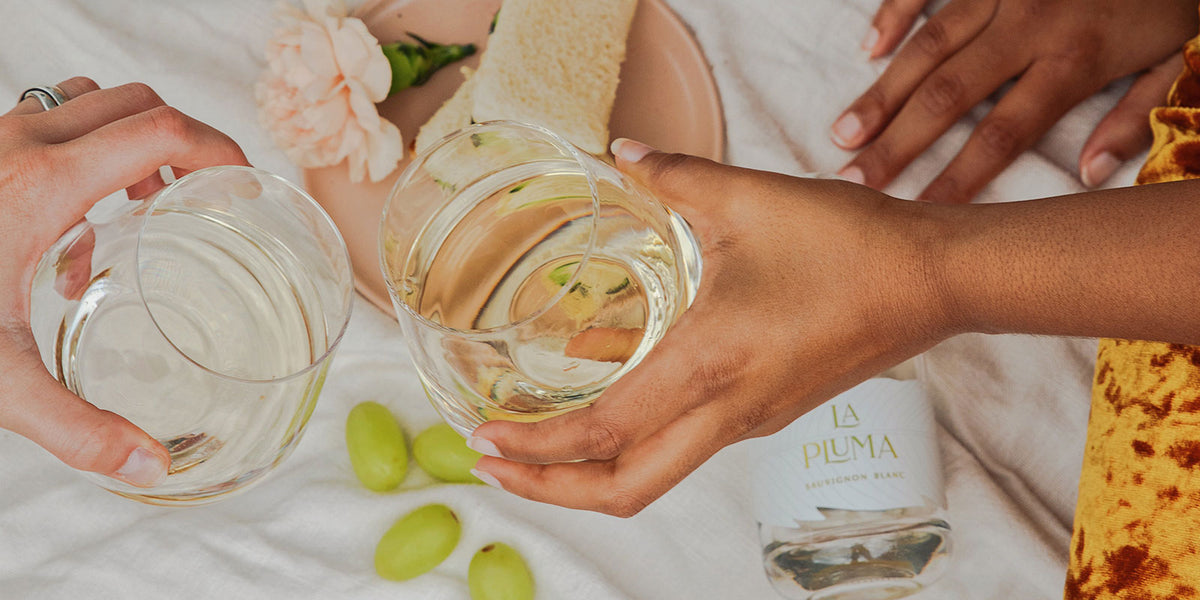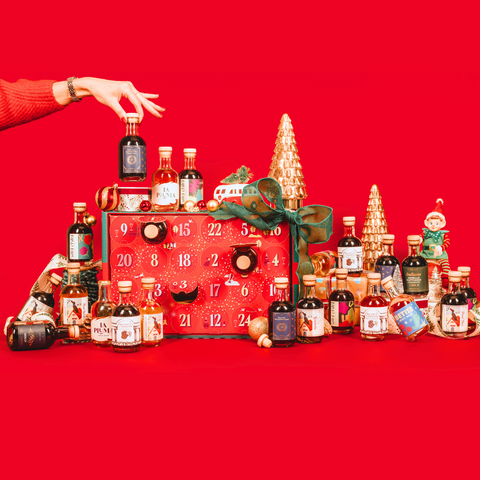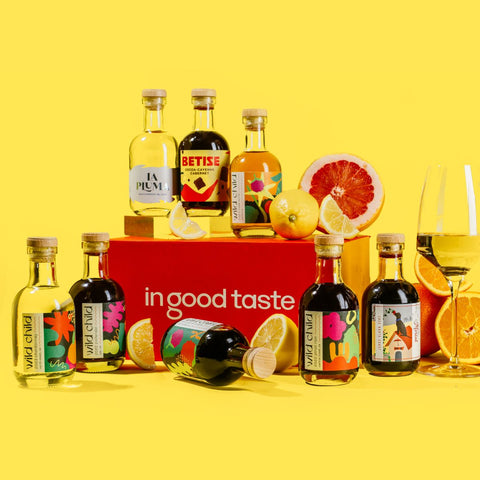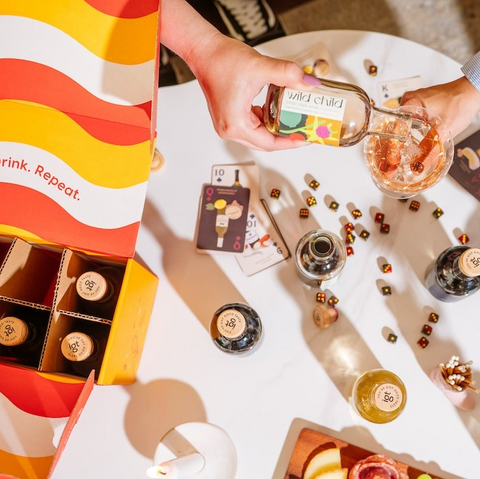Sauvignon Blanc - The Wild White
Sauvignon Blanc is one of the most popular white wines available. Loved by everyone from first-time wine drinkers to seasoned sommeliers, this easy-to-drink wine is famous for combining light and airy tasting notes of pear, grapefruit, lime, white peach with herbal qualities of cut grass, lemongrass, and bell pepper.
History of Sauvignon Blanc
The name Sauvignon Blanc comes from the French words sauvage meaning “wild,” and blanc meaning “white.” The Sauvignon Blanc grape is said to have originated in the Loire Valley and Bordeaux Regions of western France, and surprisingly, it was considered a wild weed before farmers started turning the grapes into wine.

Brought to California in the 1880s and New Zealand in the 1970s, Sauvignon Blanc has grown in popularity ever since as white wine enthusiasts looked for a tasty alternative to Chardonnay.
Is Sauvignon Blanc a Varietal Wine or a Wine Blend?
For the most part, Sauvignon Blanc stands on its own as a varietal wine. However, several Sauvignon Blanc grapes grown in the Pessac-Léognan region of Bordeaux, France, are commonly blended with heavier white wines like Chardonnay or Semillon to produce a fuller body and more balanced flavor profile.

What Does Sauvignon Blanc Taste Like?
Sauvignon Blanc can have a wide range of aromas and tasting notes, from fresh-cut grass, peas, or asparagus to tropical tones like passion fruit or grapefruit. If the wine has a more herbaceous/grassy taste, that likely means its grapes were grown in a cooler climate or picked early from the vine. In either of these conditions, these grapes have a higher content of the chemical compound called pyrazine, which infuses the grapes with a flavor many people describe as “green.” (Never tasted something “green”? Sample a Sauvignon Blanc from the Loire Valley, and you’ll see what we mean.). On the white wine sweetness chart, Sauvignon Blanc ranks in the “off-dry” category alongside Chardonnay, Pinot Gris, and Semillon.
Tasting Notes of Sauvignon Blanc Can Vary by Region


Sauvignon Blanc Around the World
Grapes grown in warmer climates or allowed to ripen longer on the vine have less pyrazine and feature fruitier tones. However, if the climate is too warm, the grapes can ripen too quickly, which lessens the intended flavor.
The aging process for varietal Sauvignon Blanc is often completed using stainless steel, which preserves the wine’s natural flavor and acidity. But sometimes, when winemakers are feeling a little creative, they blend the Sauvignon Blanc with other white wines, fermenting and aging itin oak barrels to produce flavors of creme brulee, lemon curd, and butter.

While there isn't a drastic difference between Old World and New World Sauvignon Blancs, Old World varietals tend to be slightly earthier than the New World wines made in the United States.
Most of the world’s Sauvignon Blanc is made in the following regions:
- Loire Valley, France (strongest “grassy” tones)
- Bordeaux, France
- Marlborough, New Zealand (strongest “fruity” tones)
- Napa Valley, California, United States
- Casablanca, Chile
- South Africa
Serving and Storing Sauvignon Blanc
Like most white wines, Sauvignon Blanc is best served chilled. About two hours in the refrigerator will bring it to the ideal temperature range of 50-55 degrees Fahrenheit. For faster results or outdoor events, an ice bucket for 30-40 minutes will do the job.
If you’re saving some for later, keep your unfinished bottle in the fridge with a cork. It should keep its fresh flavor for up to four days, but after that, it will lose its flavor due to oxidation.
How to Serve & Enjoy Sauvignon Blanc




What to Pair with Sauvignon Blanc
If you’ve ever asked yourself, “what type of wine would go with this salad?” we have your answer. Sauvignon Blanc is known for pairing well with salads and raw, green vegetables like cucumbers, broccoli, and brussels sprouts.
It also pairs nicely with shellfish, sushi, white fish, and creamy pasta dishes. Feeling adventurous? Pair it with Thai, Greek, and Mexican cuisine for a deliciously audacious meal.
Sauvignon Blanc vs. Chardonnay or Pinot Grigio
All popular white wines, Sauvignon Blanc, Chardonnay, and Pinot Grigio, have their own unique qualities that stand out from each other.
Compared to unoaked Chardonnay, Sauvignon Blanc is more herbaceous and acidic. It’s also lighter and a bit sweeter than Chardonnay, although still considered dry.
Compared to Pinot Grigio, Sauvignon Blanc is more aromatic and boasts a brighter taste. Pinot Grigio is softer with more notes of citrus, a flavor profile that makes it a better white wine selection for the beginner.
Direct comparisons aside, it’s worth noting that most Chardonnay and Pinot Grigio drinkers are pleasantly surprised at how well they take to Sauvignon Blanc. If you’re not sure which of white wine is your favorite, try our Curated Wine Flights and see which you like best.












